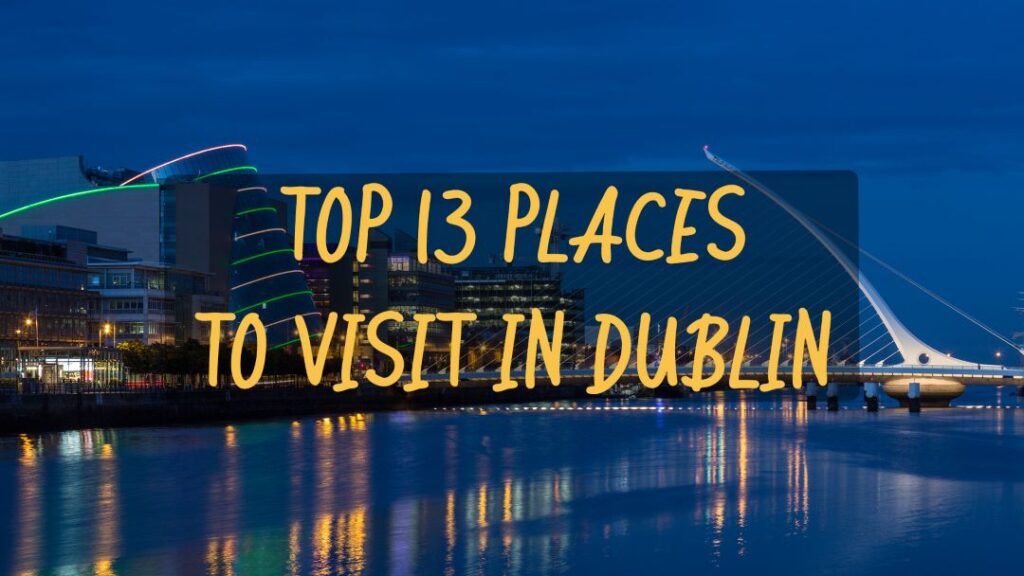Welcome to Dublin: A City of Rich History and Vibrant Culture
Dublin, the capital city of Ireland, is a place where history meets modern charm. From ancient cathedrals to bustling streets, Dublin offers something for everyone.
In this article, we’ll explore the top 13 places you must visit in Dublin. Whether you’re interested in history, nature, or just having a good time, Dublin has it all. Let’s dive into the heart of this incredible city and discover its treasures.
1. Trinity College and the Book of Kells
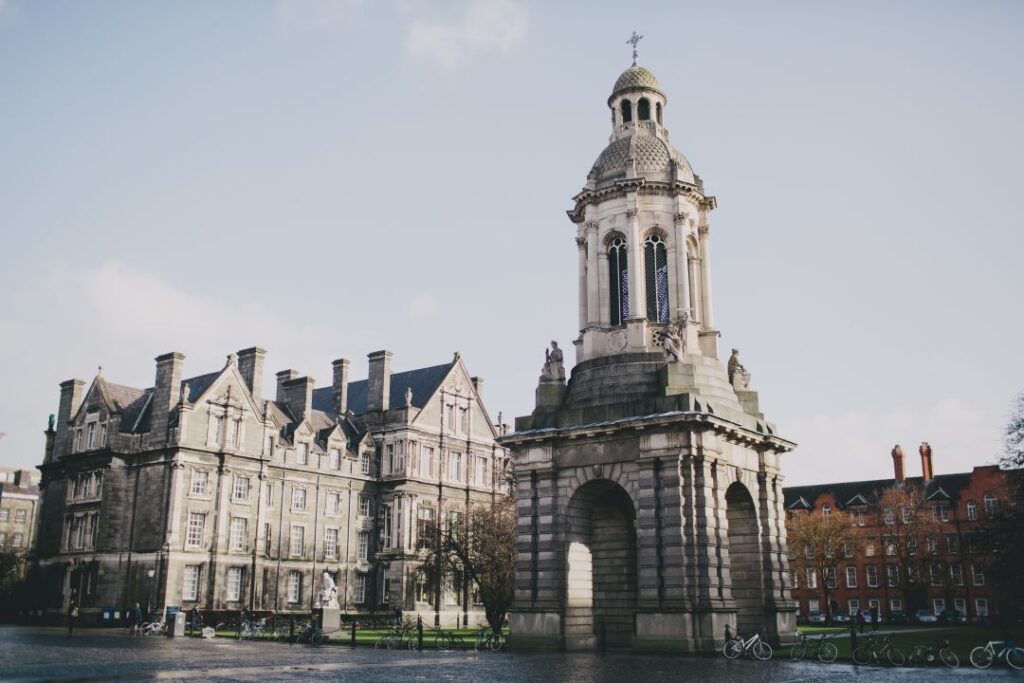
Trinity College, founded in 1592, is one of the oldest universities in Ireland. The Book of Kells, housed in the college’s Old Library, is a stunning manuscript created by monks over a thousand years ago.
This beautifully illustrated book is a masterpiece of medieval art. Walking through the cobblestone paths of Trinity College, you can almost feel the history that has unfolded here. The college’s grand buildings and lush gardens provide a peaceful retreat in the heart of the city.
Address: College Green, Dublin 2, Ireland
Opening Times: Mon-Sat: 9:30 AM – 5:00 PM, Sun: 9:30 AM – 4:30 PM
Cost of Entry: Adults €16, Students and Seniors €13, Children under 12 free
2. St. Patrick’s Cathedral
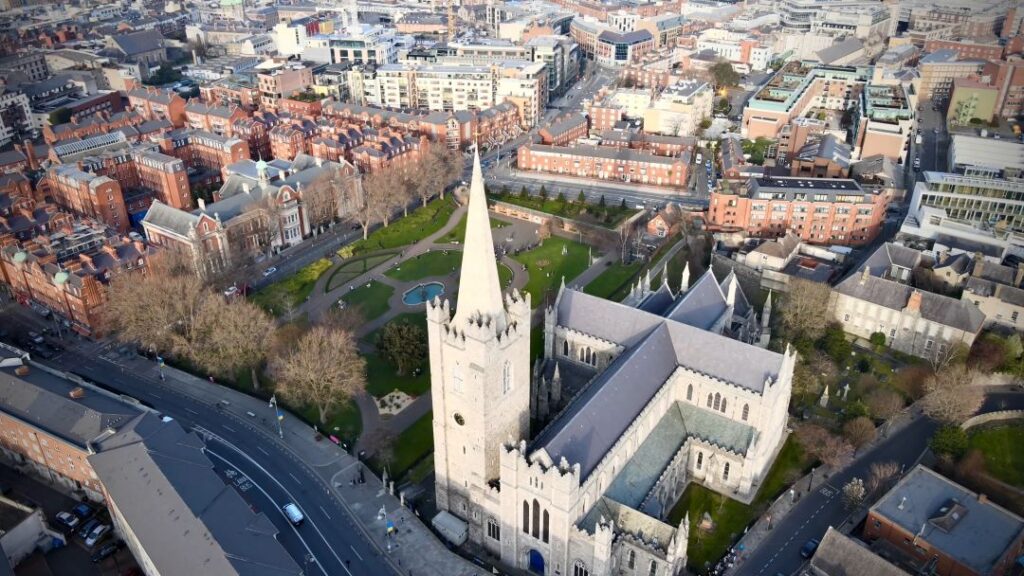
St. Patrick’s Cathedral is the largest church in Ireland and was founded in 1191. It is named after St. Patrick, the patron saint of Ireland. The cathedral is not only a place of worship but also a site of immense historical significance.
The beautiful stained glass windows and detailed stonework tell stories of Ireland’s past. The gardens surrounding the cathedral are perfect for a peaceful walk. Visiting St. Patrick’s Cathedral gives you a deep sense of Dublin’s rich religious heritage.
Address: St. Patrick’s Close, Dublin 8, Ireland
Opening Times: Mon-Sat: 9:30 AM – 5:00 PM, Sun: 9:00 AM – 10:30 AM, 12:30 PM – 2:30 PM
Cost of Entry: Adults €8, Students and Seniors €7, Children under 12 free
3. Kilmainham Gaol
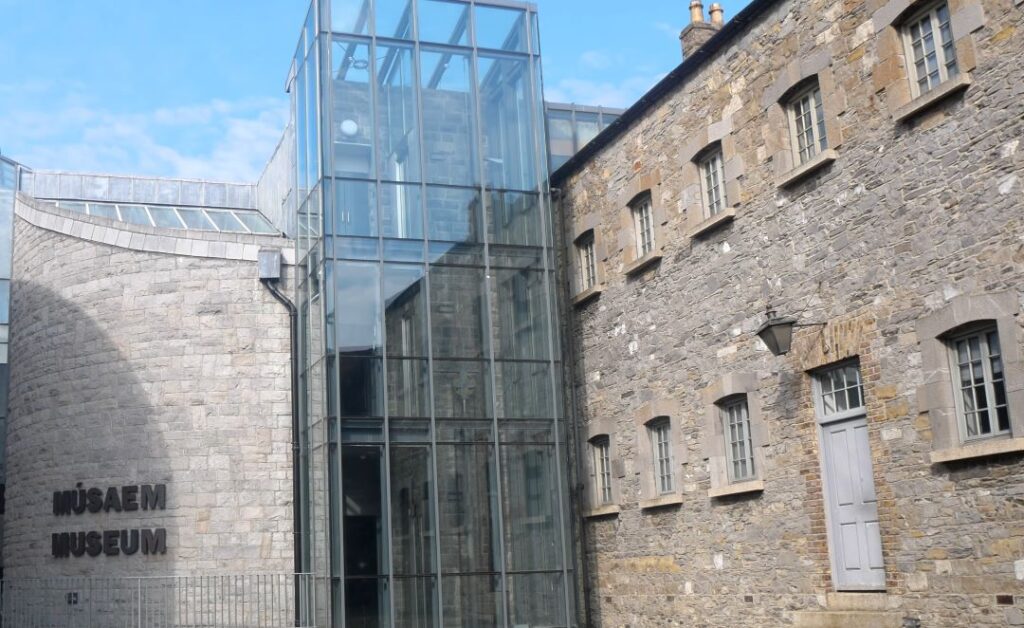
Kilmainham Gaol, built in 1796, is one of the most important historical sites in Ireland. This former prison played a significant role in Ireland’s fight for independence. Many leaders of the Irish rebellion were imprisoned and executed here.
Today, Kilmainham Gaol is a museum where you can learn about the harsh conditions prisoners faced and the prison’s role in Irish history. Walking through the cold, narrow cells gives you a vivid sense of the struggles endured by those who fought for freedom.
Address: Inchicore Road, Kilmainham, Dublin 8, Ireland
Opening Times: Daily: 9:00 AM – 6:00 PM
Cost of Entry: Adults €8, Students and Seniors €6, Children €4
4. Dublin Castle
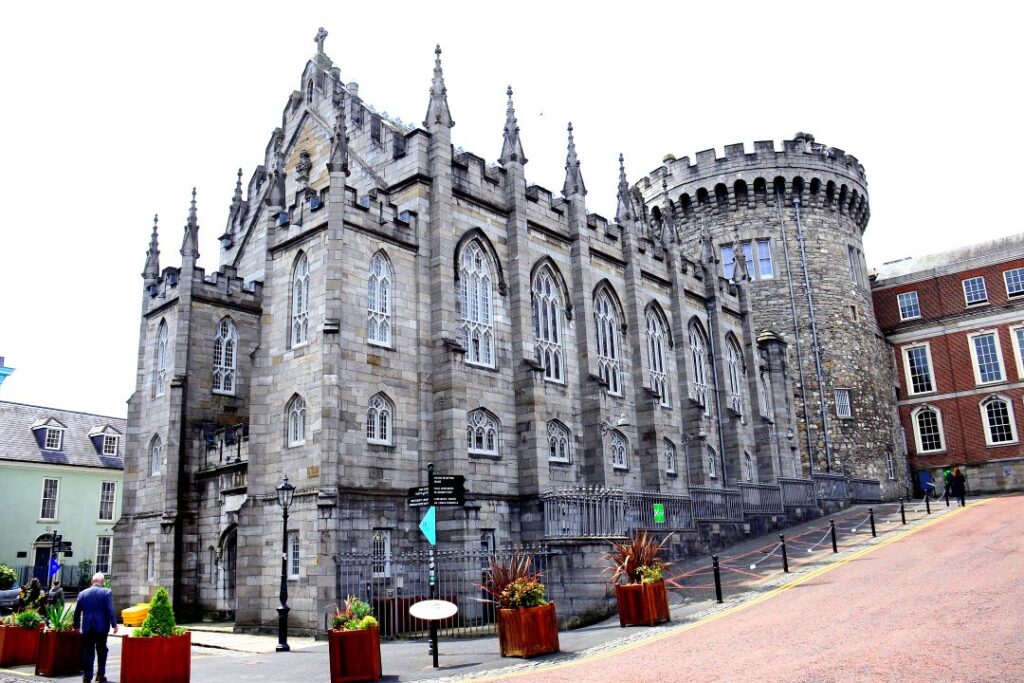
Dublin Castle has been a key part of Irish history for over 800 years. Originally built as a defensive fort, it later served as the seat of British rule in Ireland. Today, it is a major government complex and a tourist attraction.
The castle’s State Apartments are lavishly decorated and offer a glimpse into the opulent lives of the viceroys. The medieval tower and the chapel royal are also fascinating to explore. Dublin Castle is a must-visit to understand Ireland’s rich and complex history.
Address: Dame Street, Dublin 2, Ireland
Opening Times: Mon-Sun: 9:45 AM – 5:45 PM
Cost of Entry: Adults €8, Students and Seniors €6, Children €4
5. Grafton Street
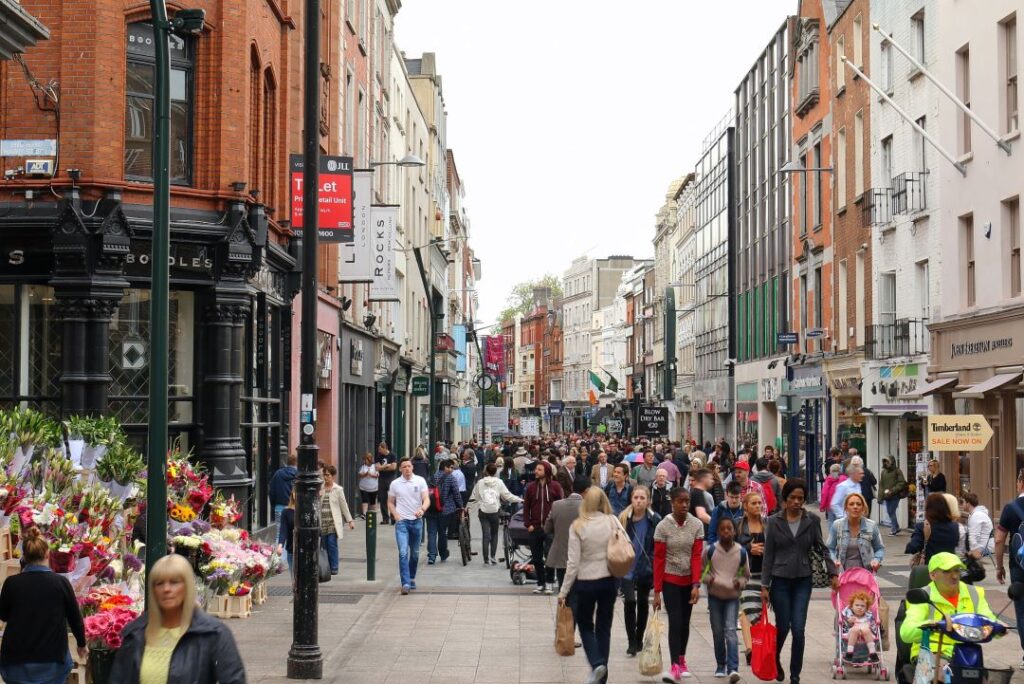
Grafton Street is Dublin’s premier shopping destination. This bustling pedestrian street is lined with a mix of high-end shops, street performers, cafes, and restaurants. Whether you’re looking for the latest fashion, unique Irish souvenirs, or just want to soak in the lively atmosphere, Grafton Street is the place to be.
The street comes alive with music and entertainment, especially during the weekends. A stroll down Grafton Street is a delightful experience that captures the vibrant spirit of Dublin.
Address: Grafton Street, Dublin 2, Ireland
Opening Times: Shops: Mon-Sat: 9:00 AM – 6:00 PM, Sun: 11:00 AM – 6:00 PM
Cost of Entry: Free
6. Ha’penny Bridge
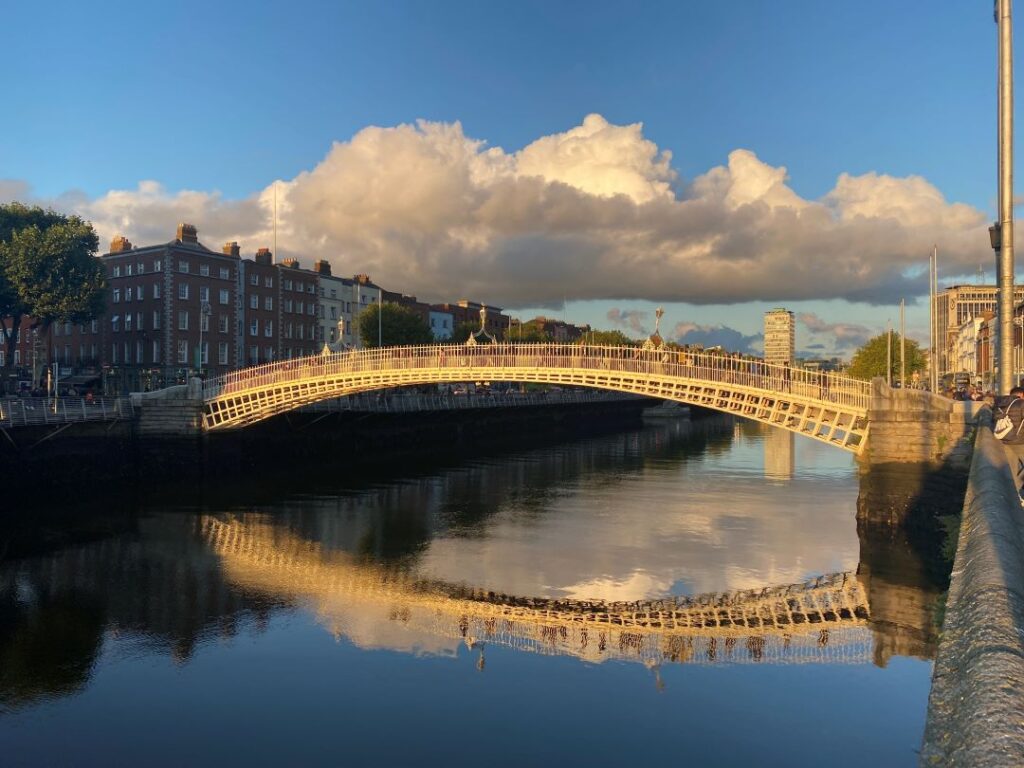
The Ha’penny Bridge, built in 1816, is one of Dublin’s most iconic landmarks. This pedestrian bridge spans the River Liffey and was originally a toll bridge, charging a halfpenny for crossing.
Its elegant iron structure and historical significance make it a favorite among locals and tourists alike. The bridge offers stunning views of the river and the cityscape. It’s a perfect spot for a leisurely walk or a photo opportunity. Crossing the Ha’penny Bridge is like stepping back in time to old Dublin.
Address: Bachelors Walk, North City, Dublin, Ireland
Opening Times: Always open
Cost of Entry: Free
7. Christ Church Cathedral
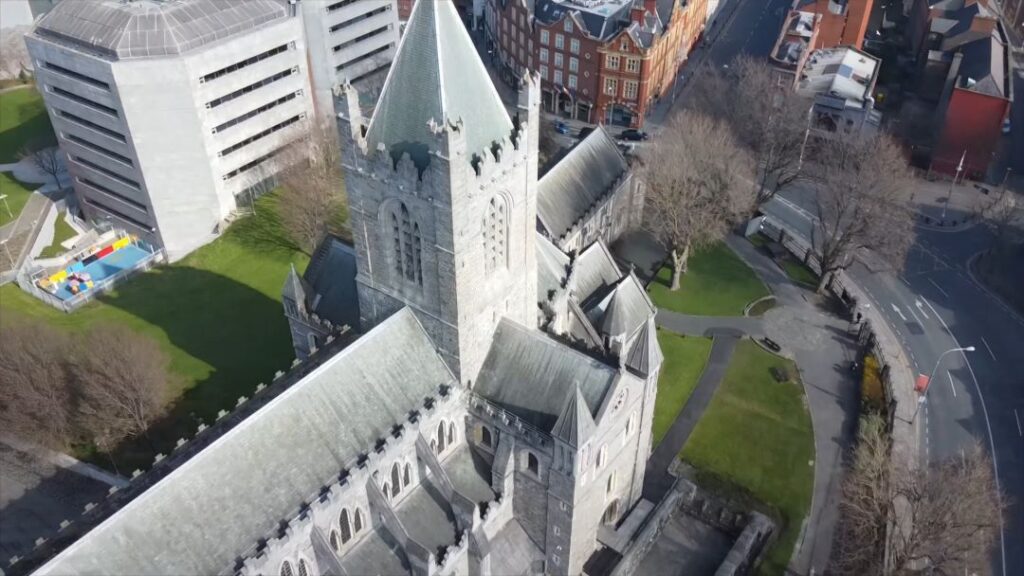
Christ Church Cathedral, founded in 1030, is Dublin’s oldest building. This magnificent cathedral has a rich history and is known for its stunning architecture. The cathedral’s crypt is one of the largest in the UK and Ireland and houses many fascinating artifacts.
The nave and choir are adorned with beautiful stained glass and intricate stone carvings. Attending a service or a concert here is a memorable experience. Christ Church Cathedral is a testament to Dublin’s medieval heritage and architectural grandeur.
Address: Christchurch Place, Dublin 8, Ireland
Opening Times: Mon-Sat: 9:30 AM – 5:00 PM, Sun: 12:30 PM – 2:30 PM
Cost of Entry: Adults €8, Students and Seniors €6, Children €3
8. Phoenix Park
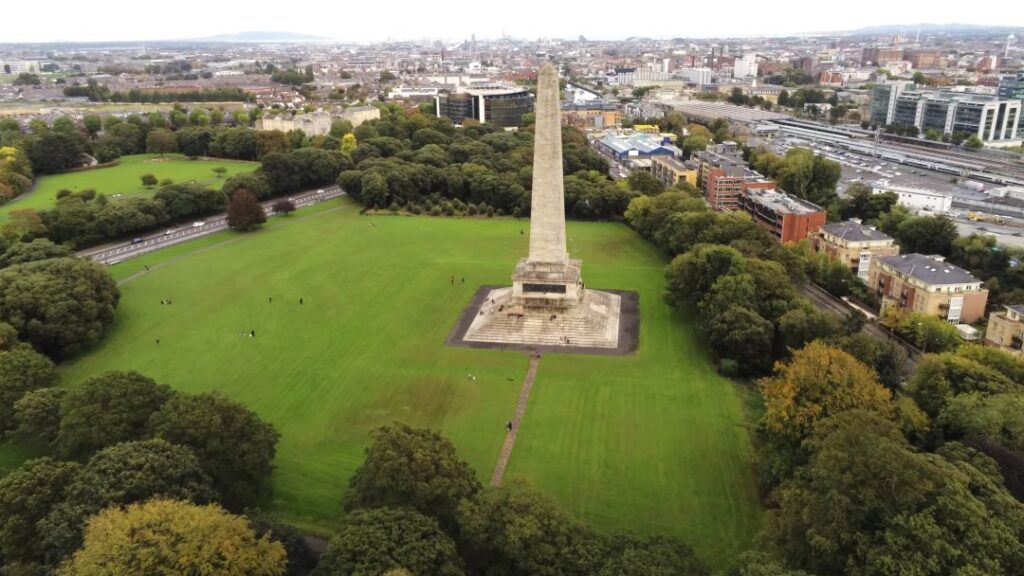
Phoenix Park is one of the largest enclosed parks in Europe, covering over 1,700 acres. It was established in the 17th century as a royal hunting park and is now a favorite spot for locals and tourists.
The park is home to the President of Ireland’s residence and the official residence of the U.S. Ambassador. You can enjoy walking, cycling, and picnicking in the park. It’s also home to a herd of wild fallow deer. Phoenix Park offers a peaceful escape from the city’s hustle and bustle.
Address: Phoenix Park, Dublin 8, Ireland
Opening Times: Always open
Cost of Entry: Free
9. Dublin Zoo

Dublin Zoo, located within Phoenix Park, is one of the oldest zoos in the world, having opened in 1831. The zoo is home to over 400 animals from around the globe, including lions, tigers, and elephants.
It is divided into various themed areas, such as the African Savanna and the Asian Forests. The zoo is committed to conservation and education, making it a fun and informative visit for families. Walking through the zoo, you can see animals up close and learn about their habitats and conservation efforts.
Address: Phoenix Park, Dublin 8, Ireland
Opening Times: Daily: 9:30 AM – 6:00 PM
Cost of Entry: Adults €20, Children €15, Seniors €16
10. National Museum of Ireland – Archaeology
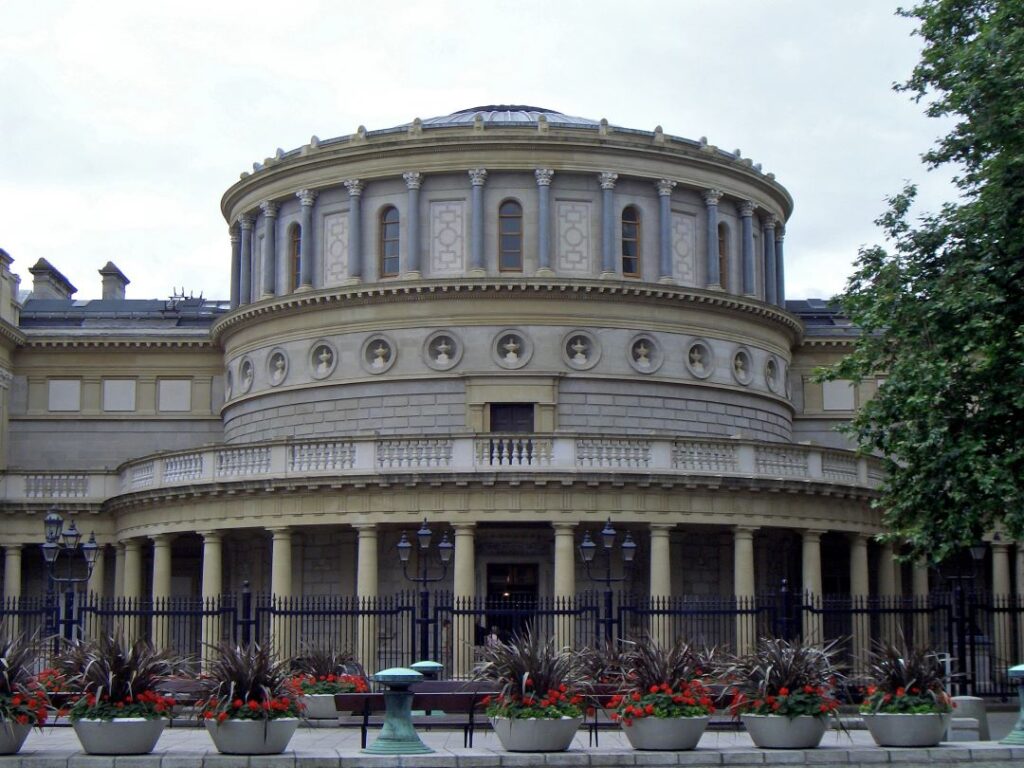
The National Museum of Ireland – Archaeology, established in 1890, showcases Ireland’s rich history through its extensive collection of artifacts. The museum’s exhibits include prehistoric gold, Viking artifacts, and medieval treasures.
One of the highlights is the collection of bog bodies, which are remarkably well-preserved human remains from ancient times. The museum offers a fascinating journey through Ireland’s past, from the Stone Age to the Middle Ages. It’s a must-visit for history enthusiasts.
Address: Kildare Street, Dublin 2, Ireland
Opening Times: Tue-Sat: 10:00 AM – 5:00 PM, Sun: 2:00 PM – 5:00 PM
Cost of Entry: Free
11. National Gallery of Ireland
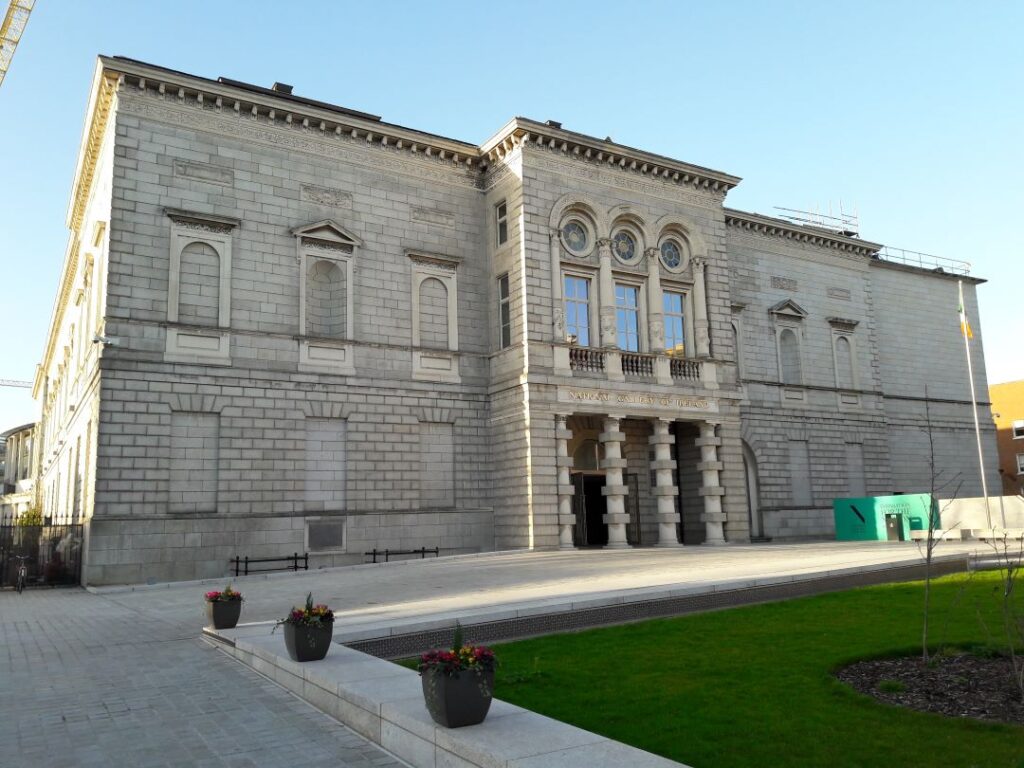
The National Gallery of Ireland, founded in 1864, houses an impressive collection of European and Irish art. The gallery features works by renowned artists such as Caravaggio, Vermeer, and Jack B. Yeats.
The elegant rooms and beautifully curated exhibits provide an immersive experience. The gallery also hosts temporary exhibitions, workshops, and lectures, making it a dynamic cultural hub. Art lovers will appreciate the diverse collection and the opportunity to see masterpieces up close.
Address: Merrion Square West, Dublin 2, Ireland
Opening Times: Mon-Sat: 9:15 AM – 5:30 PM, Sun: 11:00 AM – 5:30 PM
Cost of Entry: Free
12. Merrion Square
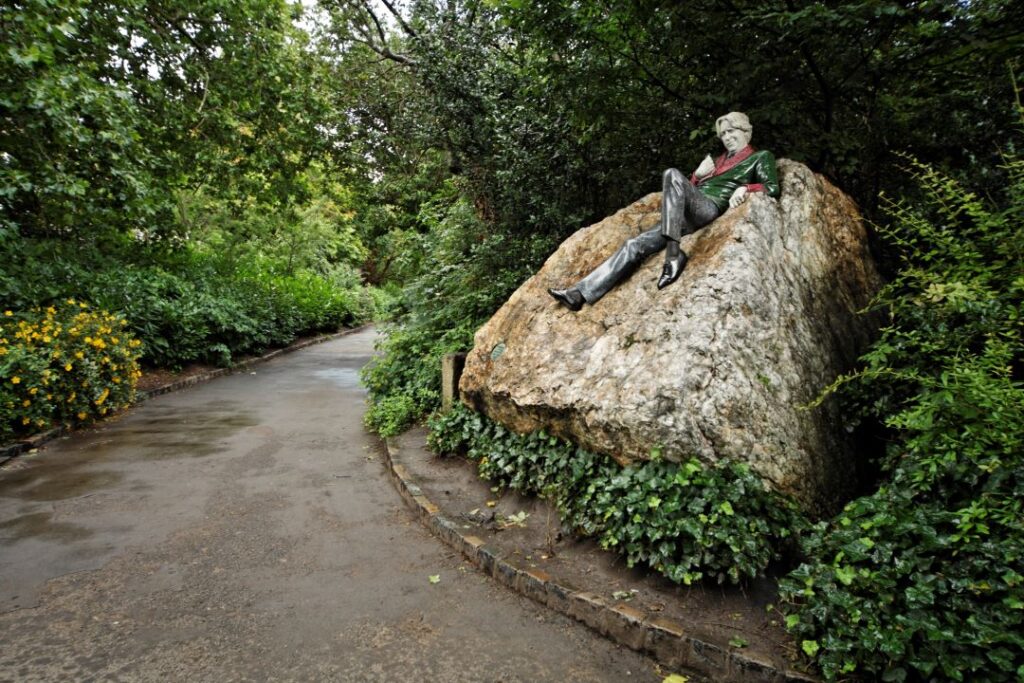
Merrion Square is one of Dublin’s most beautiful Georgian squares, laid out in the 1760s. It is surrounded by elegant townhouses and has a central park that is perfect for a relaxing stroll.
The square is known for its vibrant atmosphere, with artists displaying their work on Sundays. A statue of Oscar Wilde, who once lived nearby, can be found in the park. Merrion Square is a delightful spot to enjoy the architecture, art, and tranquility of Dublin.
Address: Merrion Square, Dublin 2, Ireland
Opening Times: Always open
Cost of Entry: Free
13. Dublinia Viking Museum
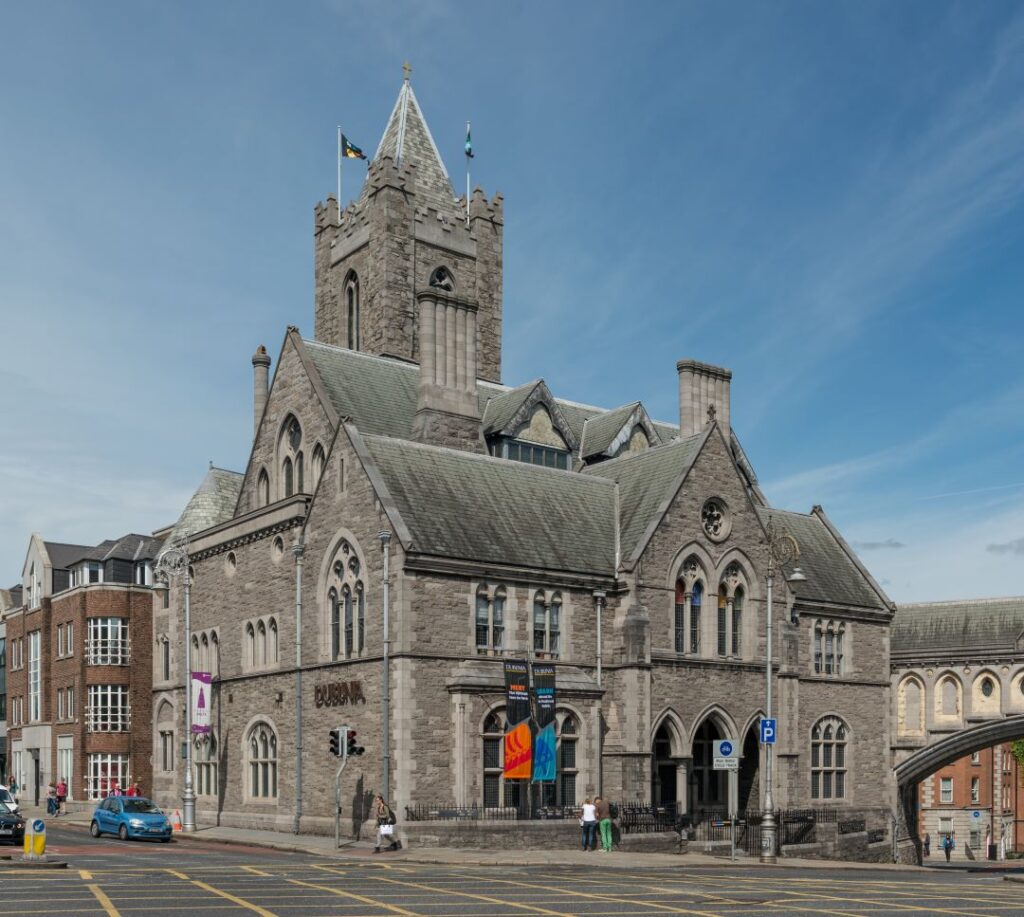
Dublinia Viking Museum offers an interactive journey through Dublin’s Viking and medieval history. The museum islocated in the heart of the city and is housed in a stunning Gothic revival building.
Visitors can explore reconstructed Viking houses, see medieval artifacts, and even climb a medieval tower for panoramic views of the city. The museum’s engaging exhibits and activities make history come alive for visitors of all ages. Dublinia is a fun and educational experience that brings the past to life.
Address: St. Michael’s Hill, Christ Church, Dublin 8, Ireland
Opening Times: Daily: 10:00 AM – 6:30 PM
Cost of Entry: Adults €14, Children €7, Students and Seniors €12
How to Spend Time in Dublin?
Dublin offers a variety of activities to suit all interests. You can start your day with a visit to the historic Trinity College and the Book of Kells. Afterward, stroll down Grafton Street for some shopping and enjoy lunch at a local cafe.
In the afternoon, visit the National Gallery of Ireland or the National Museum of Ireland – Archaeology. In the evening, explore the lively Temple Bar area for dinner and live music. For nature lovers, a walk in Phoenix Park or along the River Liffey is a great way to relax. Dublin has something for everyone, whether you enjoy history, art, shopping, or just soaking in the vibrant atmosphere.
Why is Dublin So Famous?
Dublin is famous for its rich history, vibrant culture, and friendly people. The city is known for its literary heritage, being the birthplace of famous writers like James Joyce and Oscar Wilde. Dublin’s music scene is also renowned, with traditional Irish music sessions happening in many pubs.
The city’s historical landmarks, such as Trinity College, Dublin Castle, and St. Patrick’s Cathedral, attract visitors from around the world. Dublin is also famous for its lively atmosphere, with a variety of festivals, events, and nightlife. The combination of history, culture, and modern charm makes Dublin a unique and popular destination.
Is Dublin Very Expensive?
Dublin can be quite expensive, especially in terms of accommodation and dining out. However, there are ways to manage your budget while enjoying the city. Many of Dublin’s attractions, such as the National Gallery of Ireland and the National Museum of Ireland, offer free entry.
You can also explore the city’s parks and gardens, which are free to visit. Eating at local cafes and markets can be more affordable than dining at restaurants. Public transportation, like buses and trams, is a cost-effective way to get around. With a bit of planning, you can experience Dublin’s highlights without breaking the bank.
How Many Days Do You Need in Dublin?
To fully experience Dublin, a minimum of three to four days is recommended. This allows you to explore the main attractions, such as Trinity College, Dublin Castle, and the National Museum of Ireland. You can also take time to enjoy the city’s vibrant neighborhoods, like Temple Bar and Grafton Street.
If you have more time, consider taking day trips to nearby attractions such as the Cliffs of Moher or the historic town of Howth. However, if you only have a short time, a two-day trip can still give you a good taste of Dublin’s charm and highlights.
Why is Dublin the Most Liveable City?
Dublin is often considered one of the most liveable cities due to its high quality of life, vibrant culture, and friendly community. The city offers a mix of historical charm and modern amenities, with plenty of green spaces and cultural activities.
Dublin’s public transport system is efficient, and the city is known for its safety and cleanliness. The local people, known for their hospitality, contribute to the welcoming atmosphere. Dublin also has a thriving economy and offers a range of job opportunities, making it an attractive place to live and work.
Why You Must Visit Dublin?
Visiting Dublin is a must because of its rich history, vibrant culture, and welcoming atmosphere. The city offers a unique blend of historical landmarks, such as Dublin Castle and St. Patrick’s Cathedral, alongside modern attractions like the bustling Grafton Street and the lively Temple Bar area.
Dublin is also known for its literary heritage, being the birthplace of famous writers like James Joyce and Samuel Beckett. The city’s friendly locals and lively pub culture add to the charm. Whether you’re interested in history, culture, or just having a good time, Dublin has something for everyone.
Where is Dublin Located in Europe?
Dublin is located on the east coast of Ireland, which is an island in northwestern Europe. It is the capital and largest city of Ireland, situated at the mouth of the River Liffey.
Dublin faces the Irish Sea, with Great Britain to the east. The city is well-connected to other major European cities by air, with Dublin Airport being one of the busiest airports in Europe. Its location makes it a gateway to exploring the beautiful landscapes and rich culture of Ireland.
Can I Do Dublin in 2 Days?
Yes, you can experience a lot of Dublin in 2 days. Here’s a plan for a 2-day trip:
Day 1: Start your day with a visit to Trinity College and the Book of Kells. Next, walk to Dublin Castle and explore its grounds. Have lunch on Grafton Street, then visit St. Patrick’s Cathedral in the afternoon. End your day in Temple Bar, enjoying dinner and live music.
Day 2: Begin with a morning visit to the National Museum of Ireland – Archaeology. Then, head to Phoenix Park for a stroll and visit Dublin Zoo. Have lunch nearby, then spend the afternoon at the National Gallery of Ireland. Finish your day with a walk across the Ha’penny Bridge and a visit to the lively shops and cafes along the way.
What is the Best Month to Visit Dublin?
The best month to visit Dublin is May. During this time, the weather is mild, with temperatures ranging from 10 to 15 degrees Celsius. The days are longer, giving you more daylight to explore the city.
May also hosts several festivals and events, adding to the vibrant atmosphere. The city’s parks and gardens are in full bloom, providing beautiful scenery. Additionally, May is before the peak tourist season, so you can enjoy the attractions with fewer crowds. Overall, May offers a perfect balance of good weather, lively events, and pleasant experiences in Dublin.
Is Dublin Worth Visiting?
Yes, Dublin is definitely worth visiting. The city offers a rich blend of history, culture, and modern attractions. You can explore ancient sites like Dublin Castle and St. Patrick’s Cathedral, enjoy vibrant areas like Grafton Street and Temple Bar, and relax in beautiful parks like Phoenix Park.
Dublin’s museums and galleries provide deep insights into Irish history and art. The city’s lively pub scene and friendly locals add to the charm. Whether you’re a history buff, art lover, or just looking for a good time, Dublin has something to offer everyone.
Conclusion
Dublin is a city that captures the heart of every visitor. With its rich history, vibrant culture, and friendly people, it offers a unique and memorable experience. From exploring ancient landmarks to enjoying lively streets and beautiful parks, Dublin has something for everyone.
Whether you have a few days or a longer stay, this city will leave you with lasting memories. So pack your bags and get ready to discover the magic of Dublin, a city where history and modern charm come together in the most delightful way.

